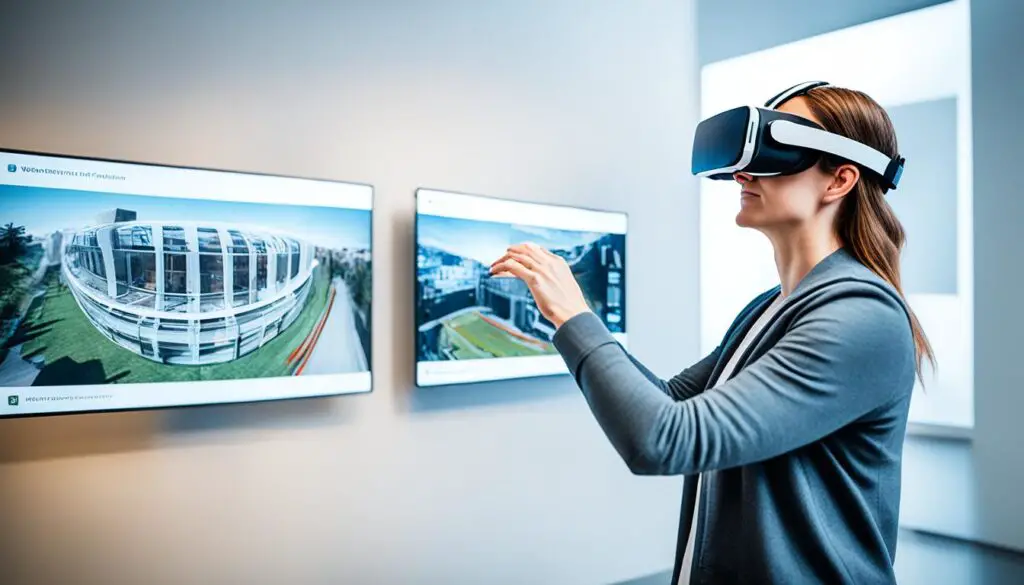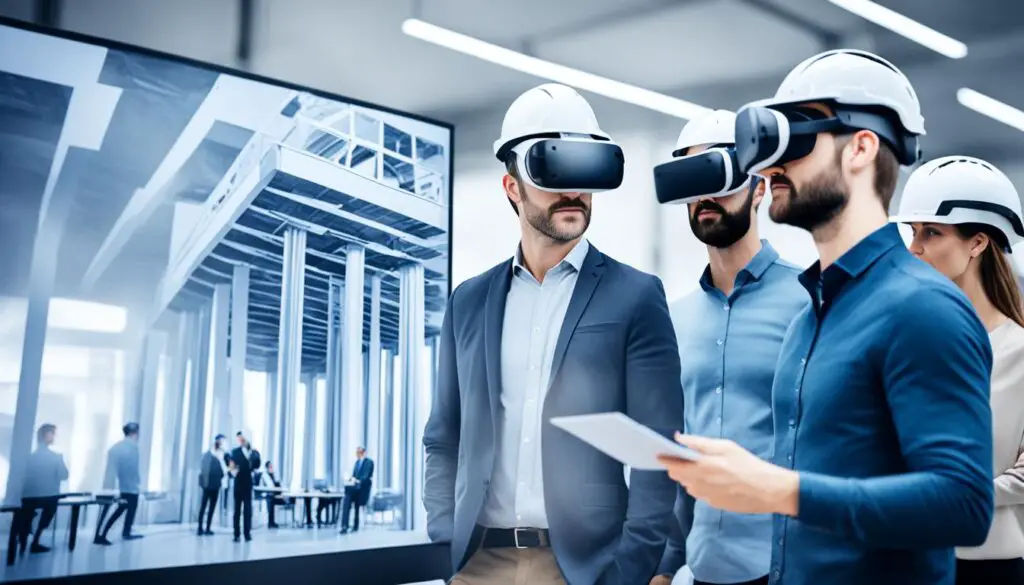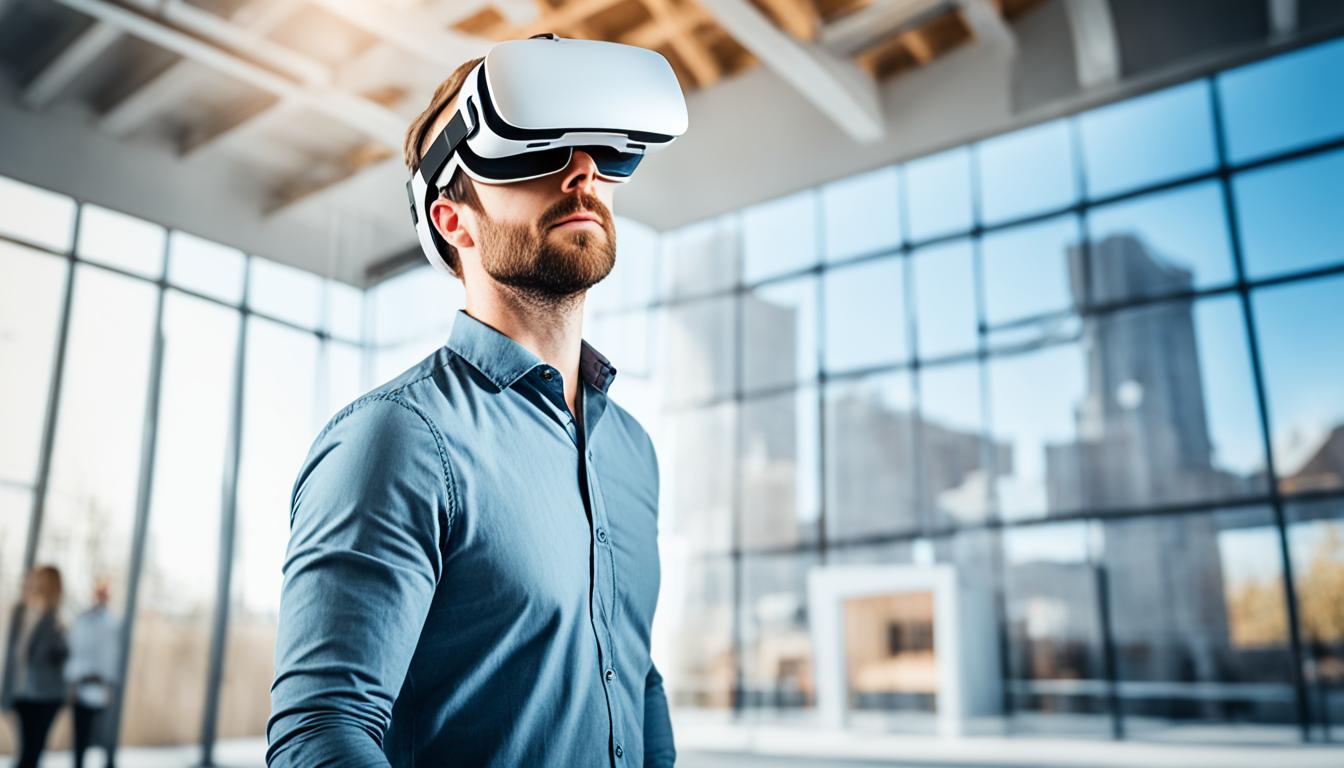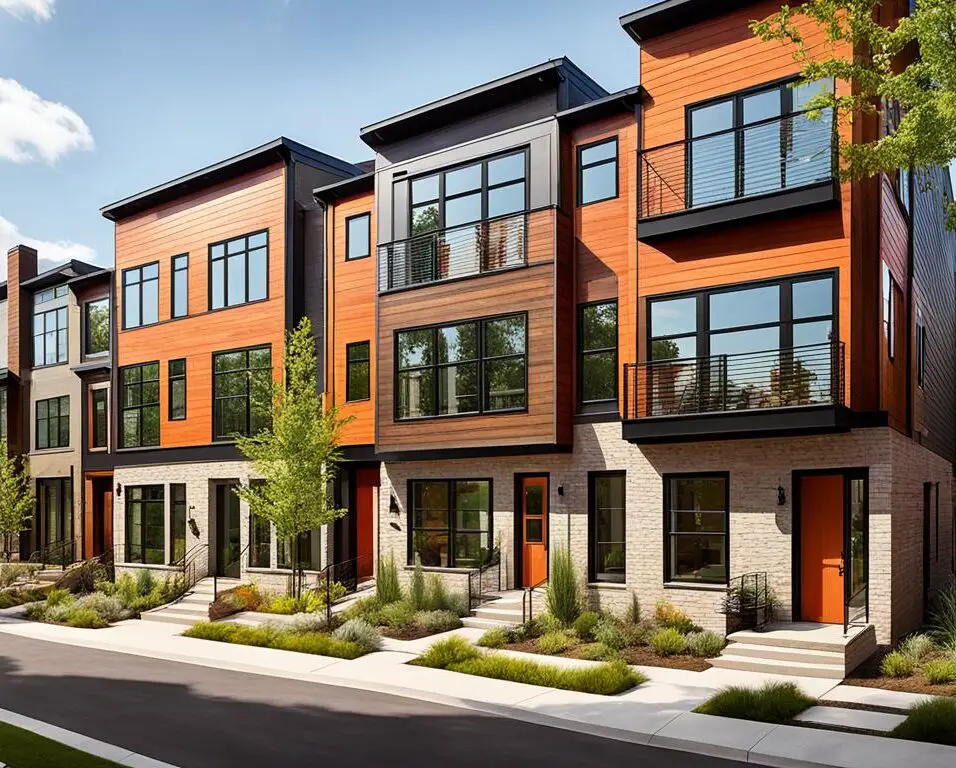How Virtual Reality Is Changing Architecture as We Know It
Virtual reality (VR) technology has revolutionized the field of architecture, offering immersive design experiences and transforming the planning process. Architects and designers are embracing VR tools and techniques to create and present architectural designs in groundbreaking ways.
With the use of VR in architecture, realistic and interactive visualizations are now possible, allowing clients and stakeholders to better understand and experience proposed spaces. This technology has fundamentally changed the way architectural projects are conceptualized, designed, and realized, shaping the future of the industry.
Key Takeaways:
- Virtual reality in architecture offers immersive design experiences and revolutionizes the planning process.
- It enables architects to create realistic 3D models that can be experienced in a virtual environment, enhancing visualization.
- VR technology improves communication between architects and clients, enabling real-time changes and immediate feedback.
- It has the potential to save costs and time by identifying design flaws early and reducing the need for physical prototypes.
- Virtual reality finds applications in immersive design reviews, virtual walkthroughs, and training and education in architecture.
The Benefits of Virtual Reality in Architecture
Virtual reality (VR) technology brings numerous advantages to the design and construction process in architecture. The use of VR allows architects to create highly realistic 3D models that can be experienced in a virtual environment, resulting in improved visualization. This level of detail enables clients and stakeholders to accurately visualize the final outcome of the project, leading to better decision-making.
One of the significant benefits of VR in architecture is enhanced client communication. By utilizing VR tools, architects and clients can virtually walk through spaces, make real-time changes, and provide immediate feedback. This streamlined communication process facilitates a more efficient design iteration, improving project outcomes and client satisfaction.
Moreover, virtual reality in architecture offers significant cost and time savings. By identifying design flaws early on in the virtual environment, architects can avoid costly revisions and reduce the need for physical prototypes. This not only saves money but also accelerates the design and construction timeline. Additionally, VR allows for virtual collaboration among team members, irrespective of their geographic locations, promoting efficient teamwork and project coordination.

Overall, the benefits of virtual reality in architecture are extensive and transformative. From improved visualization and enhanced client communication to cost and time savings, VR technology is revolutionizing the industry and shaping the future of architectural design and construction.
Applications of Virtual Reality in Architecture
Virtual reality (VR) technology has revolutionized the field of architecture, offering architects and designers a wide range of applications to enhance their work. From immersive design reviews to virtual walkthroughs, VR has transformed the way architectural designs are conceptualized, refined, and experienced.
Immersive Design Reviews
One significant use of VR in architecture is immersive design reviews. With virtual reality, architects and clients can navigate detailed virtual models and experience the design before it is constructed. This allows for a more realistic and interactive presentation of the proposed architectural space, enabling stakeholders to better understand and visualize the design intent.
Virtual Walkthroughs
Virtual walkthroughs are another valuable application of VR in architecture. Through virtual reality technology, users can explore a space from various perspectives, aiding in decision-making and design refinement. Architects can create virtual environments that accurately represent the intended spatial experience, allowing clients and stakeholders to make informed choices and provide feedback.
Training and Education
VR technology in architecture is also widely used for training and educational purposes. Design students and professionals can immerse themselves in virtual environments to learn about different architectural styles, materials, and construction techniques. Virtual reality provides a hands-on and immersive learning experience, allowing individuals to practice and experiment in a virtual setting before applying their knowledge to real-world scenarios.
Additionally, virtual reality can simulate real-world conditions, such as lighting and acoustics, enabling architects to assess the impact of these factors on the design. By experiencing a virtual environment, architects can make informed decisions about spatial qualities and optimize design solutions accordingly.

Virtual reality has opened up new possibilities for architects and designers, allowing them to create, present, and experience architecture in a more immersive and interactive way. The applications of VR in architecture, from immersive design reviews to virtual walkthroughs and training opportunities, offer numerous benefits in terms of design visualization, client communication, and educational experiences.
Embracing the Future of Architecture with Virtual Reality
The future of architecture is poised for exciting advancements with the integration of virtual reality (VR) technology. The continuous evolution of VR hardware and software is making this revolutionary tool more accessible, user-friendly, and indispensable for architects and designers alike. As VR technology further progresses, it is set to synergize with other emerging technologies such as artificial intelligence (AI) and Building Information Modeling (BIM), unlocking new capabilities and transforming the way architectural projects are conceptualized, designed, and realized.
Advancements in VR technology have paved the way for realistic, immersive design experiences in the architectural industry. By integrating AI into VR, design processes can be automated, generating optimized solutions with minimal human intervention. Collaboratively, BIM seamlessly merges with VR in delivering comprehensive digital representations of buildings, enabling architects to visualize and navigate their designs with greater accuracy and efficiency.
The future of VR in architecture holds immense potential for increased adoption and transformative applications. As architects and designers embrace this cutting-edge technology, the opportunities for enhanced communication, improved client engagement, and streamlined collaboration will continue to grow. The integration of VR, AI, and BIM will shape a future where architectural designs are optimized, sustainable, and economically efficient.








